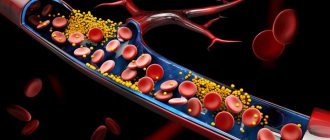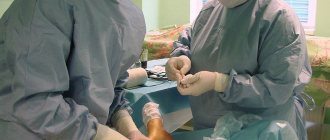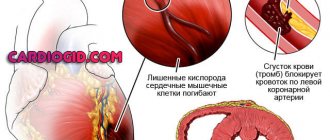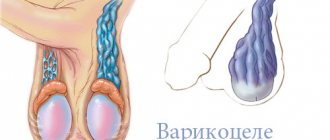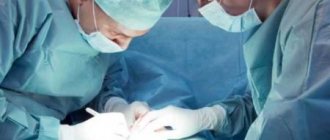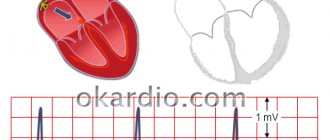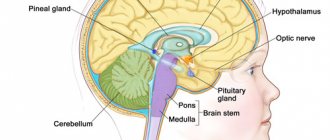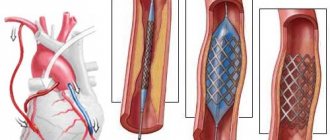Varicocele is a pathology associated with varicose veins that are located in the scrotum of a man. The disease usually appears in teenagers. It is capable of not giving itself away during its life. But sometimes there are situations when varicocele leads to pain in the testicles and can cause infertility. The only way to get rid of the pathology is surgery to remove varicocele.
Stages of the disease and indications for surgery
There are 4 degrees of development of varicocele:
- Varicose veins are determined only by ultrasound.
- The veins of the pampiniform plexus are palpated in a standing position.
- By palpation in any position, the doctor can diagnose the disease.
- Veins are visible to the naked eye.
A decrease in spermatogenic function, which can eventually lead to infertility, usually begins only in the last stages of the disease.
The operation can be performed in the following cases:
- Disturbances in sperm formation were revealed. During the study, it was found that the number of spermatozoa in the seminal fluid is reduced, their motility is reduced, and blood or pus is present.
- The patient is experiencing pain. They begin to appear at stages 2-3 of the disease, at first they are minor. Unpleasant sensations intensify when walking, after physical activity. Note. In the vast majority of cases, varicocele of the left testicle develops, so the pain most often has the same localization.
- The patient is not satisfied with the appearance of the scrotum.
- The testicle begins to decrease in size.
In the absence of symptoms, surgery may also be recommended . Some doctors believe that surgery, done in a timely manner, can prevent infertility. Others believe that this is an unjustified risk and advise limiting monitoring through periodic examinations and ultrasound.
Important! The operation is usually not performed before the age of 18. According to statistical data, in adulthood, after surgical intervention, relapses occur much less often - re-development of varicocele. Therefore, it is better to carry it out after puberty.
Compression of the veins can lead to the development of so-called “secondary varicocele”. It occurs as a result of a tumor, cyst or other formation. In this case, the patient is worried about fever, blood in the urine, dull or stabbing pain in the lumbar region. With secondary varicocele, it is necessary to eliminate the cause of the disease ; surgery to truncation of the veins is not required until the results of therapy for the underlying pathology appear.
Is it necessary to have surgery for varicocele?
Men of any age group are susceptible to developing the disease. But the risk of a pathological process increases during adolescence. Varicocele in most cases is diagnosed in boys from 13 to 16 years old. This is due to sudden changes in hormonal levels and puberty of the body. These processes can trigger the occurrence of pathology.
At the initial stages, the progressive disease does not affect spermatogenesis and does not cause disruption of testicular trophism. Therefore, surgical intervention is postponed until the age of 18, because the procedure can disrupt the natural processes of puberty, provoke the development of chronic diseases or relapses.
Before surgery, the young man is prescribed complex treatment for varicocele with medications and physical therapy. Pathology of the left testicle in some cases is a complication of varicose veins in the lower extremities. If the disease develops intensively, an exception is made and surgery is performed before adulthood to prevent infertility.
For people over 18 years of age, they try to perform the surgical procedure in the early stages after confirming the diagnosis of varicocele. This is necessary to prevent infertility and testicular atrophy. For varicocele, it is worth having surgery as soon as possible to avoid not only reproductive dysfunction, but also the development of complications. Varicose veins on the testicle on the left side can spread to the right organ, which can cause hormonal imbalances and erectile dysfunction.
Immediate surgery is not required in older people when reproductive function and testosterone levels are not important. The operation is performed only if severe pain and local inflammation occurs, which interferes with the person’s normal movement.
The procedure is not performed at the last stage of varicocele, when irreversible atrophy of the testis has occurred. In such cases, varicose veins of the pampiniform plexus lead to complete infertility, so there is no need for surgery.
Indications
Varicocele surgery in men is performed in accordance with the following indications:
- disturbance of spermatogenesis when the diagnosis is confirmed;
- severe pain with varicose veins;
- recurrence of the disease;
- strong dilation of the venous vessels around the spermatic cord, confirmed by Dopplerography and ultrasound.
For varicocele on the left, surgery is performed if drug therapy is ineffective. Surgical intervention is mandatory if pathology occurs in adolescence due to severe pain or impaired movement. The doctor begins to operate only in an inpatient setting in the department of surgery or urology. Anesthesia is selected depending on the technology of the procedure.
Surgery is needed if the testicle on the affected side decreases in size or if severe inflammation develops.
Contraindications
The following contraindications exist for surgery for varicocele:
Important information: How does varicocele affect infertility in men and is it possible to get pregnant after surgery?
Contraindications
Different surgical techniques may have different contraindications. Open surgical interventions are not performed for:
- The presence of diseases in the stage of decompensation (impaired organ functions that cannot be restored without treatment) - diabetes mellitus, cirrhosis of the liver, etc.
- Inflammation in the active stage.
In addition to the described contraindications, endoscopic operations are not performed in cases of previous surgical interventions in the abdominal cavity. This is due to a violation of the clinical picture and an increased likelihood of physician errors.
Sclerosis is not carried out with the following contraindications:
- Large anastomoses (bridges) between vessels, which can lead to the entry of the drug used for gluing into healthy veins or arteries;
- Increased pressure in nearby veins (eg, renal veins);
- The structure of the vessels does not allow the insertion of a probe (the crumbly nature of the veins).
Preparatory stage and contraindications
Surgery does not always bring recovery. With some accompanying deviations, any operation on the venous bundle in men is contraindicated:
- Blood clotting is impaired (coagulopathy of any origin);
- Recent heart attack or stroke;
- Irregularities in cerebral circulation;
- Inflammation of the genitourinary system;
- Extragenital pathology in a pronounced form;
- Diabetes mellitus during the period of decompensation of the disease.
Before surgery, the patient is sent for additional examinations that will help to better understand the full picture of the disease. The doctor will examine the patient’s medical history and ask what surgical interventions have already been performed over the past five years.
General anesthesia in large quantities does not benefit the body, so in some cases the most gentle method, laparoscopy, is contraindicated.
Before the procedure, the patient is sent for examinations:
- Ultrasound with Doppler, the scrotal area is examined;
- General tests: feces, blood sugar, urine;
- Test for HIV and hepatitis B, syphilis;
- Angiography.
If during the examinations concomitant diseases are identified, the patient is first recommended to undergo treatment. At the request of the patient, an allergic reaction to an anesthetic drug is tested. If the anesthesia causes an allergy, the operation may end disastrously.
Preparing for surgery
10 days before the proposed procedure, patients need to undergo some tests:
- Blood test (general, group and Rh factor, coagulability, sugar content).
- General urine analysis.
- X-rays of light.
- Electrocardiogram (can be prescribed to all patients or only to men over 30 years of age).
- Analysis for hepatitis B and C viruses, HIV.
In addition, the doctor usually prescribes an ultrasound of the scrotum or an ultrasound using the Doppler method (using a contrast agent) to obtain a more complete clinical picture. Additional studies are possible depending on the patient's condition.
In the morning before the operation, you need to refuse food and water, and take a hygienic shower . The pubis and abdomen must be clean shaved. Taking medications for chronic diseases (diabetes, hypertension, bronchitis, etc.) must be agreed with your doctor.
Revascularization of the pathological area
The testicular vein revascularization procedure is performed through a deep incision at the top of the penile shaft. The patient is under general anesthesia during the procedure.
Through the incision, the venous bundle is pulled out and cut off completely to the vein of the spermatic cord. Then, instead of the cut tissue, the epigastric vein is sutured. After suturing the vessels, normal blood circulation is resumed. Complications after surgery are practically not observed. Recovery takes several weeks. The patient is discharged home 3–4 days after the procedure.
Pros of the procedure:
- Possibility of operating on patients with any stage of varicose veins;
- Rapid restoration of blood circulation even after the most advanced form of varicocele;
- The probability of the disease returning is only 5%.
Disadvantages stand out:
- Long recovery period;
- Complexity of the procedure.
Only the most experienced surgeons undertake the operation.
According to statistics, the testicular vein revascularization method is the most effective in quickly restoring blood circulation.
Methods of performing the operation
The classification of surgical treatment methods can be based on the method of access and technology. Based on the second characteristic, two large groups of operations are distinguished:
- With preservation of the recocaval anastomosis;
- With its excision.
Note. A renocaval shunt (anastamosis) is a communication bridge between two testicular veins. It occurs as a pathology due to varicocele and contributes to blood stagnation.
The second method is currently recognized as the most effective and is used most often.
According to technology, it is customary to distinguish three main types of operations:
- Laparoscopy (minimally invasive method);
- Endovascular sclerotherapy;
- Open surgery (can be performed in various modifications - according to Marmar, Ivanissevich, Palomo).
Important! Removal operations for varicocele are not performed. All vessels remain inside the body; they are either glued together (sclerotic) or ligated.
Varicocele surgery options
There are different methods of performing operations, the classification of which is based on the technique and method of access to the veins. If we consider technology, there are operations with excision and with preservation of the caval bridge (shunt). This shunt is a bridge between two testicular veins. Because of it, the blood stagnates.
The type of operation is chosen depending on the form of the disease
Another classification is based on how varicocele surgery is performed (by what access). Based on this, three types of intervention are distinguished:
- endovascular sclerotherapy;
- laparoscopic intervention;
- open treatment option for Varicocele, types of operations - Palomo, Marmar or Ivanissevich method.
During the operation, veins are not removed - the vessels remain in place. The affected veins are either ligated or glued together (sclerosed).
Sclerotherapy
This operation is the least invasive. It comes down to sclerosis (gluing) of varicose vessels. The big advantage of sclerotherapy is that it does not require hospitalization. It takes place in an angiography room under local anesthesia. After the onset of anesthesia, the surgeon punctures the wall of the right femoral vein percutaneously. A probe is inserted there, with the help of which the condition of problematic vessels is assessed and a therapeutic substance is delivered.
A 3% solution of thrombovar is used as a sclerosing compound. A contrast agent is injected into the vessels and thus the success of the operation is determined. If the varicose vein is not visualized, this means that the colored compound is not entering it, and the surgical intervention was effective. In this case, the probe is removed and a bandage is applied to the puncture site. The patient can go home on the same day.
It is generally accepted that with sclerotherapy the risk of relapse is higher than with classical surgery, but doctors talk about only a slightly increased likelihood. However, due to reduced effectiveness, such surgical interventions are performed quite rarely. They are usually recommended in the initial stages of the disease, when the patient still has no complaints.
Methods of surgical intervention
Based on the access method during surgery for varicocele, there are 2 types of intervention:
- With excision of the recocaval anastomosis.
- While maintaining its integrity.
The first method is more effective.
There are 4 methods of intervention:
- Open surgery (according to Ivanissevich, Marmar or Palomo).
- Embolization of varicocele (endovascular sclerotherapy).
Marmar surgery
- Laparoscopic varicocele surgery.
- Laser procedure.
Regardless of the technique used to perform the operation, blood vessels are not removed. They are either bandaged or glued together with a special substance.
Varicocele operation according to Marmar
The Marmara operation technique for varicocele is minimally invasive. To carry it out, the surgeon uses a special microscope. Typically, microsurgery for varicocele is performed under local anesthesia. In this case, the patient will experience slight tingling or other sensations at the site of the operation. But Marmar surgery can also be performed under general anesthesia.
Urologist-andrologist Nikolai Konstantinovich Solovyov tells more about the Marmar operation:
A microscopic incision is made directly next to the ilium. This way the postoperative suture will be invisible. Through the incision, the surgeon ties the vein. After a week, the stitches are removed. The Marmara operation for varicocele is as precise as possible, so there is virtually no risk of accidental damage to blood vessels and arteries.
Varicocele operation according to Ivanissevich
During the procedure, the doctor ligates the dilated vein. The lymph nodes are not affected. Ivanissevich's operation for varicocele is performed mainly under general anesthesia.
The length of the incision made by the surgeon is about 5-10 cm. Having reached the choroid plexus, the doctor carefully separates the lymphatic vessels and grabs the vein with a dissector. After this, it is bandaged.
Sclerotherapy
X-ray endovascular surgery for varicocele is considered the least invasive method. The essence of the procedure is the introduction of a special substance into the vein, which glues its walls. The advantage of this method is that the patient does not need to stay in the hospital.
During sclerotherapy, the doctor punctures the femoral vein, where a special probe is inserted, with the help of which the condition of the vessels is assessed and an adhesive is introduced (trombovar solution 3%).
Stages of sclerotherapy surgery
To evaluate the result, a contrast agent is injected into the vessels. If the problem vein does not appear, the doctor concludes that blood is not flowing here, therefore, the operation was successful. Only then can the probe be removed. They resort to embolization of varicocele only in the initial stages of development of the pathology, when changes in the vein are not yet significant.
Laparoscopy for varicocele
In most cases, laparoscopy for varicocele is performed under local anesthesia. First, the surgeon makes a puncture with a diameter of 5 mm in the navel area, through which a tube with a triangular needle is inserted inside. To increase the space for doctor manipulation, gas is injected into the peritoneal cavity.
The video shows laparoscopic surgery for varicocele:
Using a laparoscope, the doctor reaches the damaged vein and ligates it. After which the peritoneum is sutured. How long the patient will have to stay in the hospital after laparoscopy depends on the anesthesia chosen. If the operation was performed under local anesthesia, he will be able to go home the next day. If general anesthesia was used, the man will have to spend 3 to 7 days in the hospital.
To assess the quality of the procedure, the doctor uses Doppler ultrasound or ultrasound.
Laser coagulation
The procedure involves cauterizing the damaged area of the vein using a laser. An intravascular endoscope is used to carry out the manipulation. After the intervention, the vein is excluded from the general blood flow. Anesthesia is not required for laser surgery.
Laparoscopic surgery
General or local (more often) anesthesia is used. Epidural anesthesia (painkiller injected into the spine) is also sometimes used. After the onset of anesthesia, the surgeon makes a puncture in the navel area with a diameter of about 5 mm. A trocar is inserted into it - a triangular needle connected to a tube. Gas is injected into the abdominal cavity to create space for surgical procedures.
A laparoscope, a tube connected to a lighting device and a camera, is inserted into the hole. It allows the doctor to monitor the progress of the operation. Under the control of a laparoscope, two more five-millimeter punctures are made - in the iliac region and above the pubis, and trocars are inserted into them. The patient is tilted to the right 15-20° for better visualization. The doctor uses scissors inserted into the puncture to cut the peritoneum.
Next, the arteries and lymphatic vessels are separated. This is necessary so that they are not harmed during the operation. Dilated veins are ligated. The peritoneum is sutured. An aseptic bandage is applied to the punctures. The length of hospitalization depends on the anesthesia chosen. After local anesthesia, you can go home on the day of surgery or the next. After general anesthesia, discharge occurs 3-7 days after the intervention. The effectiveness of the operation is assessed using ultrasound or Dopplerography.
How different types of operations are done
There are different types of operations for varicocele, with the help of which damaged vessels are removed or blood flow through dilated veins is stopped. There are classical treatment methods that involve tissue excision to open direct access to varicose veins, laparoscopic intervention, intravascular or microsurgical technology. The best technique is selected based on the individual characteristics of the patient’s body, laboratory parameters and the severity of the pathological process.
Operation Marmara
Surgery refers to microsurgical treatment methods. During the procedure there is no need to penetrate the abdominal cavity, therefore the technology for removing varicocele is considered the most effective. After surgery, there is a low likelihood of relapses and complications. Minimally invasive treatment practically does not injure tissue. Positive dynamics of tissue restoration without recurrence of the disease is observed in 90% of patients. The operation lasts about 40 minutes.
Before surgery, you will need to undergo general blood and urine tests and an electrocardiogram.
At the initial stage of surgery, a 3 cm long incision is made at the exit site of the spermatic cord. From the base of the penis, excision of soft tissue is carried out at a distance of 1 cm. Using surgical instruments, the doctor finds the spermatic cord and, under a microscope, begins to ligate the venous vessels surrounding it. The accuracy of the ligation is determined by the visual expansion of the affected veins, so arteries, lymphatic vessels and nerves are not injured during the procedure. After completion of the manipulation, the wound is sutured in layers.
The rehabilitation period is only 48 hours, so there is no need for long-term hospitalization of the patient. After 2 days, the patient is discharged from the hospital. During the week, you should not perform intense physical activity or lift various weights. Thanks to the technology, the seam is carried out below the linen level, so a small scar will not stand out.
Important information: What to do if after varicocele surgery the left testicle hurts when you touch it
Operation Ivanissevich
Surgery for varicocele in most cases is performed using the Ivanissevich technology. During surgical intervention, manipulations are carried out through direct access to the groin area: thanks to longitudinal oblique excision, the venous inguinal plexus can be isolated. An incision no more than 5 cm long is made in the lower abdominal region parallel to the inguinal canal.
During the operation, doctors tie off the mouth of the testicular vein, followed by dissection. The vessels are closed using ligatures. Similar actions can be carried out with the branches of the testicular vein. In this case, the adult patient is conscious and local anesthesia is performed. In childhood, the procedure is performed under general anesthesia. After completion of the manipulation, the tissues are sutured layer by layer and secured with skin sutures. A sterile bandage is applied over it.
Despite the widespread use of the technique, there is a high risk of damage to the lymph nodes, nerves, large femoral artery and other vessels in the inguinal canal. Ivanissevich’s technology is ineffective, so in 40-65% of cases patients undergo a repeat procedure due to the development of a relapse. This is due to the fact that during the operation the doctor may not detect all the affected veins. The surgeon's vision is limited to a small incision. The duration of the operation is 15-40 minutes.
After completion of the procedure, pain may develop, which can be relieved with ice or painkillers. To prevent infectious and inflammatory diseases, take antibacterial drugs. For a week after the operation, you must wear a special support bandage. This bandage reduces the degree of tension on the spermatic cord and reduces the risk of discomfort. The recovery period is about 3 weeks. The stitches are removed on the 9th day.
For the first 2-3 days, it is necessary to limit physical activity. After this time, you can take short walks. In the next 6 months, it is not recommended to subject the body to physical strain.
Laparoscopic surgery
Endoscopic surgery for varicocele is performed without excision of soft tissue in the area of the inguinal fold. This technology is carried out using the laparoscopy method. The purpose of surgical intervention coincides with other methods of treating varicose veins and involves ligation and dissection of the testicular vein.
During the operation, special instruments are used - an endoscope or laparoscope, which are inserted using a catheter. The devices are equipped with a fiber optic unit that transmits the image to the monitor. At the end of the endoscope there are small instruments. Thanks to the use of a laparoscope, it is possible to avoid severe bleeding, reduce the risk of complications and trauma to soft tissues.
Surgery is performed under general anesthesia. To block blood flow through the testicular vein, 3 small punctures no longer than 0.5 cm are made on the abdomen. A catheter is inserted into the incision in the navel area, through which a small video camera penetrates into the abdominal cavity. In the other 2 protocols, surgical procedures are performed. Scissors, ligatures and clamps are inserted into them. The time of varicocele surgery using laparoscopy technology is 30-40 minutes.
At the initial stage of the procedure, an insufflator tube is inserted into one puncture to introduce gas into the retroperitoneal and preperitoneal space. At this time, the camera transmits an enlarged image to a special monitor. Thanks to the resulting picture, the surgeon can freely navigate the operated area. A wide view allows the doctor to quickly remove the arterial and venous testicular vessels from under the peritoneum. After this, titanium staples are applied to the veins and the bloodstream is tied with ligatures. At the end of the manipulations, the vessels are removed or crossed.
On the 3rd day the patient is discharged from the hospital. A sterile bandage is applied to the punctures, so the tissue is restored in a short period. Thanks to laparoscopic surgery, it is possible to ligate vessels in parallel with bilateral varicocele. Other treatment technologies require 2 separate incisions. The endoscopic procedure can be performed in cases of severe pain or asymptomatic disease.
This technique for treating varicocele is performed under general anesthesia due to the involvement of the abdominal cavity during surgery and filling the space free from organs with gas. If the patient were conscious, he should experience a severe painful shock.
Important information: What medications are used for the medical treatment of varicocele in men
Laser surgery
Against the background of varicocele, types of surgery using almost any technique require excision of tissue in the affected area. Laser therapy is performed without an incision in the abdominal or groin area. Surgery is performed using an intravascular endoscope. The built-in video camera helps to quickly find the inflamed vessel. The affected endothelium is coagulated from the inside under the action of a laser. During the process of blood clotting and tissue burning, dilated veins are removed from the local bloodstream. Thanks to this technique, anesthesia is not required.
The procedure takes place in accordance with the following algorithm of actions:
- The surgical site is anesthetized.
- A small puncture is made in the groin area and a catheter about 2 mm thick is inserted into the femoral vein. The endoscope will penetrate through it into a large vessel.
- Using a camera and x-ray control, the device is guided to the affected bloodstream, where doctors coagulate the circulation.
- The duration of the procedure is 20 minutes. After this time, the surgical instruments are removed and a pressure bandage is applied.
The patient can leave the hospital 30 minutes after completion of the operation.
Operation Marmara
This type of intervention involves micro-access and a low degree of invasiveness. It is carried out under the control of a microscope. The choice of anesthesia largely depends on the wishes of the patient; in most cases, local anesthesia is sufficient, which may cause minor pain or a feeling of tingling and warmth.
The surgeon makes an incision in the pubic area, as close as possible to the ilium, which makes the seam after the operation invisible (it will be located below the upper edge of the underwear). The doctor excises the integument and subcutaneous tissue, isolates the seminal canal and ligates the vein. The fabrics are sutured. The sutures are removed on the 7th day. The Marmar procedure is highly precise, reducing the risk of damage to arteries or lymphatic vessels.
Open operation according to Marmar
Micro-operation according to Mamar or the small incision method is considered one of the safest and most effective . The procedure is performed through a small incision, only 1.5 to 3 cm in length. The entire procedure is carried out under a special microscope, tissue dissection is carried out layer by layer.
In this case, the specialist sees all the smallest branches and quickly cuts them off. Injury to nerve endings during microsurgery is insignificant.
The following poles stand out:
- Low invasiveness, since the incision is miniature in size;
- Short postoperative period;
- The seam has an aesthetic appearance and is difficult to notice;
- The likelihood of complications is 80–95% lower than when using the Ivanissevich method.
One of the disadvantages is the impossibility of using the technique in the last stages of the development of the disease (at stages 3 and 4 of varicocele).
The procedure is performed under local anesthesia and takes up to 30 minutes. Sutures are removed 7–8 days after surgery. The recovery period is up to 1 month.
The procedure is used in all modern clinics. In public hospitals, patients with a referral are provided with the procedure free of charge.
Operation according to Ivanissevich
Operation according to Ivanissevich
General anesthesia is used more often for this type of intervention, but local or epidural anesthesia can also be used. The essence of the operation is to ligate veins with varicose veins while preserving the lymphatic vessels.
The surgeon makes an incision in the pubic area up to 10 cm long. Usually its size is smaller - 5-6 cm. Using a scalpel and hooks, he cuts and spreads all the underlying muscles to the choroid plexus of the testicle. Here it is necessary to separate the lymphatic vessels. Then, using a dissector (blunt, curved scissors), the veins are grabbed and ligated. Muscles and tissues are sutured.
Ivanissevich and Palomo method
Both methods for eliminating varicocele in men are practically the same. The Ivanissevich procedure is performed under both local and general anesthesia. The essence of the procedure comes down to ligation of dilated veins. The surgeon makes a 6-10 cm long incision above the pubis, spreads the muscles to the plexus of the testicle, and separates the lymphatic vessels. Then it grabs and ligates the affected varicocele veins. The final stage of the operation is suturing the muscles and tissues.
The method for eliminating varicocele by Ivanissevich and Palomo is very similar to each other
When performing an operation using the Palomo method, the essence of the actions is the same, but the incision is made higher, so the surgeon gets a greater overview. As a result, the likelihood of relapses is reduced, but the risk of damaging the artery that supplies blood to the seminal canal increases. This blood vessel is located next to the pampiniform plexus and is therefore damaged.
Operation prognosis
The prognosis is usually favorable. When using minimally invasive methods, the probability of relapse is close to 2%, with Ivanissevich surgery - about 9%. Some sources indicate other figures; private clinics provide data on the re-development of varicocele after open interventions in 30%.
In 45% of cases, the patient has a normal spermogram after surgery, in 90% of cases there is a statistically significant improvement in indicators. In the older age group, with advanced varicocele, all values are worse than in younger patients.
Forecast
In most cases, the prognosis after surgery is positive. The risk of relapse when using minimally invasive techniques does not exceed 2%, when using the Ivanissevich technique – 9%.
In approximately half of men, after surgery, spermogram results return to normal.
Recovery period
The patient may be prescribed the following drugs to restore spermatogenesis:
- Vitamin complexes.
- Biologically active supplements with selenium and zinc.
- Hormones . Important! They are taken strictly in courses under the supervision of a doctor and in conjunction with constant laboratory tests.
- An ointment containing an antibiotic. It is necessary to prevent wound infection.
- Painkillers. In some patients, discomfort in the operated testicle may persist for quite a long time. Usually the doctor prescribes ketonal or similar medications.
In the first 1-2 days after surgery it is necessary to:
- Keep the wound dry. It is possible to apply ice to relieve pain. A plastic bottle of frozen water wrapped in a towel will do.
- Minimize any activity, try to rest as much as possible.
- It is advisable to wear a bandage that supports the testicles.
Within 1-2 weeks after surgery it is not recommended:
- Do physical exercises that require increased effort.
- To take a bath.
- Have sex.
After the designated period, sexual activity is possible if the patient does not feel pain, discomfort, or unpleasant pulling sensations during or after the act. Erectile function does not suffer after surgery. The rehabilitation period depends on the type of operation, anesthesia, and general condition of the patient.
Many patients are afraid that the vein remains after surgery. They think this is a sign of unsuccessful surgery.
Important! It is necessary to understand that the vessels are not removed from the scrotum, but only stop being supplied with blood. The vein can be palpated or visible for up to six months.
Rehabilitation period
To restore spermatogenesis, the patient will be prescribed the following drugs:
- Vitamin and mineral complexes.
- Dietary supplements containing zinc and selenium.
- Hormonal medications. Hormone therapy can be prescribed and carried out only under the supervision of the attending physician.
- To care for the suture after surgery, antibiotic-based ointments are used to help avoid wound infection.
- Painkillers (“Ketanol”, etc.). This is due to the fact that many patients complain that after varicocele surgery the left testicle hurts.
During the first 2 days after the intervention, the patient must:
- Make sure the wound is dry. To relieve pain, cold may be applied to this area.
- Maintain bed rest and reduce physical activity as much as possible.
- Use a special bandage to support the testicles.
Testicular bandage
In the postoperative period (within 2 weeks), a man should refuse:
- Having sex (including masturbation is prohibited).
- Playing sports and performing any physical activity.
- Taking a bath.
- Alcohol consumption.
If after 2 weeks the man is not bothered by pain or other discomfort, then sexual activity can be resumed. The operation does not lead to erectile dysfunction or decreased sexual arousal. The time required to recover from varicocele surgery depends on what anesthesia was used during the procedure and the general condition of the man.
Complications after surgery
After surgery, the following syndromes and diseases may appear:
- Inflammation. It is determined by the corresponding symptoms and ultrasound results, and is successfully treated with medication.
- Neuralgic pain. It occurs as a result of damage to nerve endings and is difficult to treat (acupuncture and physical therapy are usually indicated).
- Lymphedema. It develops as a result of damage to the lymphatic vessels during surgery, and can go away on its own or by wearing a bandage that supports the scrotum or special panties.
- Dropsy of the testicle (hydrocele). The cause is lymphatic vessels damaged by negligence, treatment is similar.
- A decrease in testicular size is a dangerous complication that occurs due to damage to the spermatic artery. This is one of the most unpleasant consequences of the operation, since it is quite difficult to stop.
- Relapse is the repeated development of varicocele. Treatment is only surgical.
- Damage to the intestine or ureter. These complications after surgery occur during laparoscopy, more often among inexperienced young surgeons.
- Thrombosis (blockage) of deep veins. It occurs as a reaction to the introduction of a contrast agent into the vessels, resulting in a hematoma (internal hemorrhage) at the puncture site.
Postoperative period
When performing an operation on testicular varicocele using the Marmar or Ivanissevich technology, the patient must remain in the hospital for about 48 hours. The sutures are removed after 8-9 days. It is necessary to visit a urologist within a month to prevent complications.
Recovery
The duration of the rehabilitation period after surgical treatment of varicocele depends on the chosen technology and the age of the patient: the older the man, the longer the tissue will recover. On average, regeneration is completed in 1-2 weeks. With laparoscopic surgery, the body recovers in 24-48 hours, with microsurgical varicocelectomy - in 2-3 days.
To prevent relapses and complications, you must follow your doctor’s recommendations, move more and balance your diet. At the same time, during the rehabilitation period it is strictly forbidden to subject the body to strong physical stress, lift heavy things and run. Walking is allowed for 10-15 minutes. Activity is necessary to avoid the development of adhesions.
To avoid the occurrence of infectious diseases, you need to take a course of antibiotics. To reduce the load on the spermatic cord, it is recommended to purchase a special bandage, which must be worn for a week. You should not abuse painkillers during the recovery period, because addiction is possible. As a result, the anesthetics will stop working. Ice can be applied to relieve pain.
After the operation, it is necessary to periodically consult with a urologist and take tests for spermogram and to determine the activity of sex hormones.
Possible complications
Surgery to remove varicocele on the testicle can cause complications:
- Lymphatic stagnation. The pathological process develops when the lymph nodes are damaged during surgery. A similar situation is observed when the innervation and blood supply to tissues is disrupted.
- Relapse of the pathological process.
- Pain syndrome in the scrotum. The pain is caused by the development of adhesions or impaired production of prostaglandins.
- Dystrophy or degenerative tissue processes in the male testicle. The complication is characterized by organ atrophy after careless ligation of arteries along with damaged venous vessels. The testicle does not receive nutrition as a result of impaired microcirculation.
- Hydrocele, or dropsy. A disorder of venous outflow can lead to fluid accumulation in the scrotum.
The risk of complications depends on the experience of the operating surgeon, the severity of the pathology and the individual anatomical structure of the organs.
Price for surgery
Surgery for varicocele is not included in the list of “high-tech care” services for which funds are allocated. The website of some clinics indicates that they work with compulsory medical insurance and voluntary medical insurance, but in the first case we are talking only about a discount that a client who contacts them can receive, or a refund of part of the money spent.
The cost of the operation depends on the chosen technique and region. In provincial cities of central Russia, the price for open surgical intervention starts from 5,000 rubles, in Moscow – from 8,000 – 10,000 rubles. Sclerotherapy will cost approximately the same. Microsurgical intervention (according to Marmar) will cost at least 20,000 - 30,000 rubles. Laparoscopic surgery will cost slightly less - 15,000 - 25,000 rubles. Prices are based on local anesthesia; if the patient prefers general anesthesia, you will have to pay for it separately - 7,000 - 10,000 rubles.
Reasons for development
Norm and pathology
Varicoceles are primarily of a congenital nature and are much less likely to be secondary. One way or another, the pathology occurs due to excess pressure in the vessels of the scrotum due to which they lose their usual morphology and become deformed. Let's take a closer look at how this process occurs.
Due to a chronic increase in blood pressure in the vessels, the venous valves no longer close completely. The result is a process called reflux, which means blood flows backwards. At the earliest stages of formation, these processes are insignificant and do not lead to stretching of the walls of blood vessels; therefore, varicocele is latent for some time and has absolutely no symptoms.
This form of the disease is called preclinical. At this time, inflammatory processes have minimal effects on the body, and therefore do not cause any visible deviations in the functioning of organs and their systems in the body. Pathology at this stage, which is called subclinical, can be detected exclusively using ultrasound diagnostic methods.
The presence of reflux increases the already high pressure in the vessels, and the disease gradually develops. Stagnant processes begin to form, and venous insufficiency intensifies.
Note. Since varicocele is mainly caused by venous insufficiency inherited by the boy, the presence of the main provoking factor - high pressure in the vessels - is not necessary for the valves to malfunction.
The disease acquires clinical symptoms when the walls of blood vessels begin to stretch, lose shape and become deformed. From this point on, varicose veins can be clearly diagnosed.
At first, a man begins to feel mild pain, usually of a dull, nagging nature; sometimes there may be itching or burning. At first, discomfort appears after exertion or at the end of the working day, but as the disease progresses, the pain becomes more distinct and if the pathology progresses to the third degree, it will become constant and quite severe.
In most cases, the pathology has a hereditary predisposition
Often men and especially young men, for various reasons, do not pay due attention to these unpleasant sensations, find various explanations for themselves and hope that everything will go away soon, of course. It happens that the first stage of varicocele occurs with virtually no obvious symptoms.
Remember. Timely diagnosis and treatment of varicose veins of the scrotum reduces the likelihood of developing male infertility.
The first clinical stage is characterized by the absence of clearly defined, visually distinguishable inflamed vessels. The disease can be diagnosed using the Valsalva maneuver. The essence of this method is to palpate the veins of the scrotum with increased pressure, which is caused by abdominal tension.
To do this, the patient is asked to strain or cough while standing. If there is a varicocele, the doctor will easily identify the pathology.
The next two degrees (second and third) are especially dangerous for men's health. The inflamed vessels hurt and appear through the skin of the scrotum, giving it a bluish tint.
Destructive processes in the testicle intensify and its functional activity is disrupted. It can change its shape and become smaller in size.
In order to understand whether it is necessary to undergo surgery for varicose veins of the scrotum or not, it is necessary to take a closer look at what harmful effects this disease has and why.
Patient reviews
Most patients are satisfied with the operation, especially if this way they can get rid of infertility. When a man finds out that he can now have children, this significantly increases his self-esteem, even if he did not have such plans in the near future.
The operation was well tolerated. Many people prefer general anesthesia. The recovery period is different for everyone. Some people immediately return to normal activities, while others, even with minimally invasive interventions, feel severe pain and have difficulty moving around the house for several days.
As reviews show, poor sperm counts and difficulties in conceiving a child, even after surgery and drug therapy, are a heavy blow for families. Sometimes at first there is a sharply positive trend, which worsens over time. Only a high-level specialist can help in this matter. Some patients change 5 or more urologists before finding a good diagnostician. The surgical technique itself, as practice shows, is of secondary importance.
Surgical intervention for varicocele helps to get rid of the disease and its accompanying symptoms. It significantly increases the likelihood of conception and improves the quality of life of patients.
Pathology of the pampiniform fascicle
Varicocele in men is a pathology of the veins of the pampiniform bundle, which provides blood supply to the testicles and spermatic cords. The vessels lose their elasticity, and blood pressure presses on the walls with the same force.
The veins dilate and blood clots form in some places. Due to congestion in the veins, the outflow of blood from the testicles is disrupted, and the disease causes concomitant pathologies.
There are four types of varicocele, each of which is accompanied by its own symptoms:
- Stage 1: pathology is diagnosed only using Doppler ultrasound.
- Stage 2: the swollen pampiniform fascicles are not visible, the patient does not experience pain. The pathology can only be felt with the patient standing.
- Stage 3: veins are detected in the patient in sitting and lying positions, swelling of the testicle is observed, and the first pain appears during sex and physical activity.
- Stage 4: Swollen veins are visible above the base of the genital organ, the patient experiences pain, and swelling is visible on the scrotum.
The earlier the disease is diagnosed and surgery is performed, the easier the recovery period is. Surgery is one of the most effective methods of treating the disease at any stage.
Without timely treatment, a man will lose his reproductive ability, and impotence develops against the background of painful symptoms.
In most cases, surgery is the only way to preserve reproductive function. A certain temperature is required to produce active sperm. With varicose veins, the testicles are pinched and the temperature is higher than normal. The sperm die, and the small number remaining do not have sufficient activity.
Diagnosis of varicocele
Surgery for varicocele is prescribed after a thorough diagnosis of the disease, the results of which determine the degree of development of the disease, indications for surgical intervention, as well as possible contraindications.
Diagnostic measures include interviewing and examining the patient. The survey is conducted to determine the duration of the disease and the symptoms that accompany varicocele. The survey also determines whether the man has any contraindications or allergic reactions to any medications.
An examination is carried out to determine the extent of the disease:
- The first degree of the disease is asymptomatic. There are difficulties in palpating dilated vessels. At this stage, the diagnosis is made based on data obtained using the Valsalva maneuver and ultrasound examination.
- The second degree of varicocele is characterized by a slight dilation of the veins, which is easy to determine by palpation. A man may experience pain and a feeling of heaviness during physical activity.
- At the third stage of the disease, pain is present even at rest. A man can identify dilated veins on his own; there is asymmetry of the scrotum. At this stage, under the pressure of the veins, the testicle descends and decreases in size.
Description of the disease
Varicose inflammation of the vessels of the spermatic cord and epididymis is called varicocele. According to the World Health Association, this pathology will sooner or later affect every seventh man on the planet.
The lion's share of diagnoses is registered in childhood from 11 to 16 years, which is associated with the onset of puberty, intensive growth and hormonal changes in the body of boys.
Schematic representation of normal and varicose veins
The disease itself is not seriously life-threatening, but it causes infertility, hormonal imbalance and a decrease in potency, especially in the second and third stages. Spermatogenesis is negatively affected by the factors listed in Table 1.
Table 1. Reasons that inhibit spermatogenesis:
| Depressing factor | Brief Explanation | |
| Hyperthermia of the scrotum | An increase in the area of inflamed veins leads to an increase in temperature in the scrotum, which negatively affects the formation of reproductive gametes. |
|
| Hypoxia and testicular atrophy | Slowing blood circulation causes oxygen starvation and impaired trophism of cells, so their functional activity decreases. In advanced forms, testicular atrophy develops. |
|
| Venous blood reflux | With the reverse flow of venous blood, steroid hormones of the adrenal glands are delivered to the testes, which is why synthetic processes in the testes are reduced. |
|
| Active chemical agents | In deformed veins, stagnation forms in which active chemical compounds (free radicals, nitrogen oxides) accumulate, which are initiators of undesirable reactions. | Free radical molecule |
| Violation of the histological structure of the testicles | The factors described above in this table lead to disruption of the cytological homogeneity of testicular tissue, which not only inhibits the functional activity of cells, but also provokes autoimmune immunity, leading to the destruction of reproductive gametes. |
|
Please note that with a unilateral lesion, spermatogenesis is disrupted not only in the diseased testicle, but also in the healthy one, since the temperature in the scrotum affects both testes.
Examination of guys in the teenage office
Causes
All the causes that cause the occurrence of pathology can be divided into congenital (primary) and acquired (secondary) (see Varicocele: causes of pathology). The gradation is conditional because the acquired ones do not directly cause deformation of blood vessels. They provoke the development or worsening of congenital factors that directly cause the development of the disease.
Let's briefly list the main ones:
- Congenital factors:
- heredity;
- anatomical structure of veins;
- venous insufficiency.
- Acquired factors:
- increased physical activity;
- lifting weights;
- diseases that cause increased pressure in the testicular veins (cough, constipation, tumors of neighboring organs);
- groin and genital injuries;
- wearing clothes that compress the groin and other reasons.
Note. The main cause of varicocele is a genetically determined weakness of the venous walls and valves, which manifests itself under the influence of increased blood pressure caused by various factors.
Reflux caused by malfunctioning valves
The mechanism of occurrence of varicose veins in the veins of the spermatic cord is as follows. With periodic, regular increases in pressure, the venous valves stop closing completely and reflux appears. The reverse flow of blood further provokes an increase in pressure, and stagnation processes begin to form in the veins.
For some time, the vessels remain elastic, but then the venous walls cannot withstand it and begin to deform. Varicocele becomes clinical and has clearly distinguishable diagnostic signs.
Symptoms
Varicocele has one feature that is somewhat insidious. The thing is that the early stages of the disease are asymptomatic and this latent course can last quite a long time. This is especially true for children who, for various reasons, can hide the presence of symptoms from adults or simply ignore them (see Features of varicocele in children and methods of its treatment).
This is why it is so important to ensure that the child undergoes regular preventive medical examinations, especially if there have been cases of varicose veins in the family or close relatives have varicose veins, for example, of the lower extremities.
You may suspect a problem if your child complains of the following symptoms:
- mild nagging pain in the scrotum constantly or periodically;
- the testicle is itchy or itchy;
- after physical activity there is discomfort in the scrotum;
- the appearance of thickened veins that were not there;
- the testicle droops, becomes smaller in size and loses its elasticity;
- the scrotum becomes blue and swells.
Pain in the scrotum is the first sign of disease
But these signs may also indicate the presence of other diseases, so the diagnosis must be made by a qualified doctor.
Important. Parents are responsible for the health of the child. Timely regular medical examinations will make it possible to diagnose varicocele in the early stages, which will significantly neutralize the impact of the disease on decreased fertility upon reaching puberty.
Diagnostics
Diagnosis involves finding out all the circumstances and causes of the disease, conducting a visual examination, palpation and a number of laboratory tests. The Valsalva maneuver helps to identify the first degree.
Its essence lies in the fact that the doctor examines the veins of the scrotum when the boy is in an upright position while straining or coughing. With varicose veins due to reflux, the vessels of the pampiniform plexus fill with venous blood, which is clearly palpable.
Laboratory tests for diagnosing pathology include:
- Ultrasound. Ultrasound diagnostics allows not only to detect minimal deviations in the diameter of the lumen of a venous vessel, but also to measure it;
- Dopplerography. Ultrasound is also used here, but this analysis reveals quantitative indicators of reflux even with slight non-closure of the venous valves;
- Biochemical blood test for hormone concentrations;
- A spermogram evaluates the state of spermatogenesis (see Varicocele and spermogram: what is the relationship?).
Note. Important tests for the secretion of male sex hormones and semen analysis can be taken from men and adolescents who have developed distinct secondary sexual characteristics. In children, the testes are not functionally active.
Ultrasound is a mandatory diagnostic test
Classification
There are several options for classifying varicocele. This article identifies the most common options approved for use by the World Health Association.
The disease is distinguished by localization and level of development of pathology. Depending on the location there are: left-, right- and bilateral. The anatomical location of the veins determines that about 85% of cases are left-sided varicoceles.
The rarest form of the disease on the right is no more than 5-7%. In this case, there is a possibility of a tumor in the right kidney. A little more often (up to 10-12%) simultaneous inflammation of the veins on both sides occurs, but this phenomenon is quite rare.
Please note the importance of a complete diagnosis of the body when a varicocele is detected. There is a possibility that it is secondary, and this indicates the presence of other pathologies.
The classification according to development levels is shown in Table 2.
Table 2. Classification of varicocele
| Form | Degree | Characteristic |
| Non-clinical (pre-clinical) | Subclinical | It is asymptomatic. Determined exclusively using ultrasound diagnostics. |
| Clinical | First | Has minimal effect on testicular function. Diagnosed by performing the Valsalva maneuver. |
| Second | Determined by palpation of the veins of the scrotum, the spermogram has deviations. At this stage, there is distinct periodic pain emanating from the testicle. | |
| Third | The pain syndrome is strong and constant. The veins are visible visually, as are the morphological changes in the scrotum and testicle. Spermatogenesis is suppressed, which is clearly reflected in sperm analysis. |
The note. Most diagnoses are made in adolescence during medical examinations at school or at the military registration and enlistment office.
Hyperthermia of the scrotum at different stages
When therapy is not carried out
Since varicocele poses a threat to reproductive function, the best treatment is surgical removal of the inflamed veins. This applies to clinical forms of the disease.
However, intervention may be delayed (or not performed at all) in the following cases:
- small age of the patient;
- for a man it doesn’t matter whether he can have children or not;
- presence of other contraindications.
In all of the above cases, VVV should not be higher than the first degree, not pose a threat to the integrity of the cytological structure of the testicle and be in a stable condition. In such a situation, it is possible to leave the patient under constant observation if the varicocele does not hurt and does not interfere with the patient’s normal life.
This option is possible when the issue of preserving fertility is not relevant for a man due to his advanced age or the man already has the desired number of children.
The approach to treating young patients has two points of view:
- Surgical correction is postponed until after puberty due to the high likelihood of relapses and complications. This happens because a growing organism is constantly being rebuilt and growing rapidly. This view was formed in the last century, when the Ivanissevich operation was considered the main method for removing varicose veins;
- The intervention is carried out without taking into account age, provided that modern minimally invasive techniques are used, guaranteeing high results and a low likelihood of postoperative complications. This point of view is gaining increasing popularity, since early treatment significantly reduces the chances of a child developing infertility in the future.
How to treat varicose veins in a child should be decided by the doctor and parents
How is varicocele treated?
Varicocele can only be treated surgically. Let's look at why there is no alternative treatment. The initial stages of the formation of varicose veins in the scrotum begin with the occurrence of reflux - blood flow in the opposite direction.
This occurs because excess blood pressure causes the venous valves to stop closing completely. At this time, varicocele is in a preclinical form and does not manifest itself in any way.
The presence of pathology can only be determined using ultrasound. Over time, the pressure gradually increases, stagnant processes form, and reflux intensifies.
The vascular walls begin to stretch, lose their firmness and elasticity. As a result, varicocele progresses to clinical stages in which deformation of the veins occurs.
The described process of disruption of the morphology of the testicular vein is unidirectional. Modern medicine does not know of cases in which a deformed vein, independently or under the influence of any external influence, restored its previous structure and returned to its original position.
Therefore, one should be very skeptical about various recommendations not to treat varicocele surgically, but to trust alternative sources of healing (see Can varicocele go away on its own and is surgery necessary).
Note. Varicocele can only be treated with surgery. Other methods, including the use of medications, should be considered as additional or accompanying therapy.
Pain in the testicles is the first sign of varicocele
Classical treatment methods
Surgery is the most effective treatment for this disease. The following approaches are used to eliminate this pathology:
- traditional surgical intervention (this uses open access, and because of this it is the most traumatic);
- mini-access;
- laser surgery;
- endoscopic varicocele surgery;
- microsurgical revascularization of the gonad (using optical magnification).
Surgeons can use obstructive or non-obstructive techniques.
The first include operations using the Ivanissevich, Palomo, Marmaru method, varicoceoectomy, vein alloying.
Non-obstructive methods include, for example, the formation of microsurgical anastomosis.
Recently, microsurgical treatment has been actively introduced into clinical practice. It is preferable to traditional obstructive surgery or varicocelectomy. Using the latest treatment methods - laparoscopy or microsurgery - it is possible to gain access to the affected veins. After such an intervention, impaired testicular function is highly likely to be restored.
Read more about the treatment of varicocele using the Ivanissevich method here.
The standard and familiar to many varicocele operation is the Palomo, or Ivanissevich, operation. This surgical intervention is carried out as standard under local anesthesia and using a scalpel.
The doctor’s main task is to properly ligate the veins that surround the spermatic cord, for which a nylon medical thread is used.
This method involves preventing blood flow to the testicular area, which significantly reduces overheating. Upon completion of the manipulation, the blood flow is directed through the auxiliary veins, and the patient’s condition is normalized.
A significant disadvantage of this type of treatment is the long rehabilitation period. It will take a long time for the male genital organs to fully recover. The inflammatory process that occurs after surgery requires the use of painkillers and antibiotics.
Careful care of the postoperative suture is required, bandages are changed regularly, and if necessary, special ointments are used to relieve inflammation and pain. The operation to remove varicocele involves the use of special bandages and belts that tighten the operated area and eliminate pain in the first time after surgery.
A relapse is possible; in rare cases, complications make themselves felt. Therefore, modern techniques are now used more often in practice.
Indications
Complicated or advanced varicocele is the main indication for surgery. The disease of II, III and IV degrees can lead to a lot of serious complications, for example, to male infertility.
A properly performed varicocelectomy can relieve the patient from infertility (if the inability to conceive a child was caused by this disease).
A man or boy is indicated for surgical intervention in the following cases:
- the occurrence of pain, heaviness, discomfort in the external genitalia;
- deviations from the norm in spermogram indicators;
- for the purpose of preventing varicose veins of the scrotum in young men;
- development of cosmetic defects in order to improve aesthetics;
- deformations of the internal structure of the glands;
- reduction in the size of the testes over 15%;
- infertility caused by a violation of the quality and quantity of seminal fluid;
- reasonable risk of impaired fertility in youth.
The recommended age for varicocelectomy is over 18 years. For young people below this mark, surgery is performed only when absolutely necessary.
Complications
Every third varicocele operation produces side effects. The complexity of the anatomical location of varicose veins affects. Violation of the integrity of the walls of the cord, veins, and testicular atrophy are extremely rare. More often it turns out that not all veins are blocked.
This is a job done poorly. Repeated surgery is required. You should be prepared for such a development of events.
However, the postoperative period is more often complicated: hydrocele (ligation of lymph vessels), pain syndrome (the result of testicular overflow with blood during surgery). The pain must be controlled with medication.
Unfortunately, there are no conservative treatments for varicocele, so patients should exercise patience and endurance to achieve the desired result. Self-medication is harmful. It wastes time, aggravates the situation and contributes to the complexity of the intervention itself.
The first signs of varicocele are a reason to immediately contact an andrologist. His male health directly depends on how timely the patient comes to the doctor.

